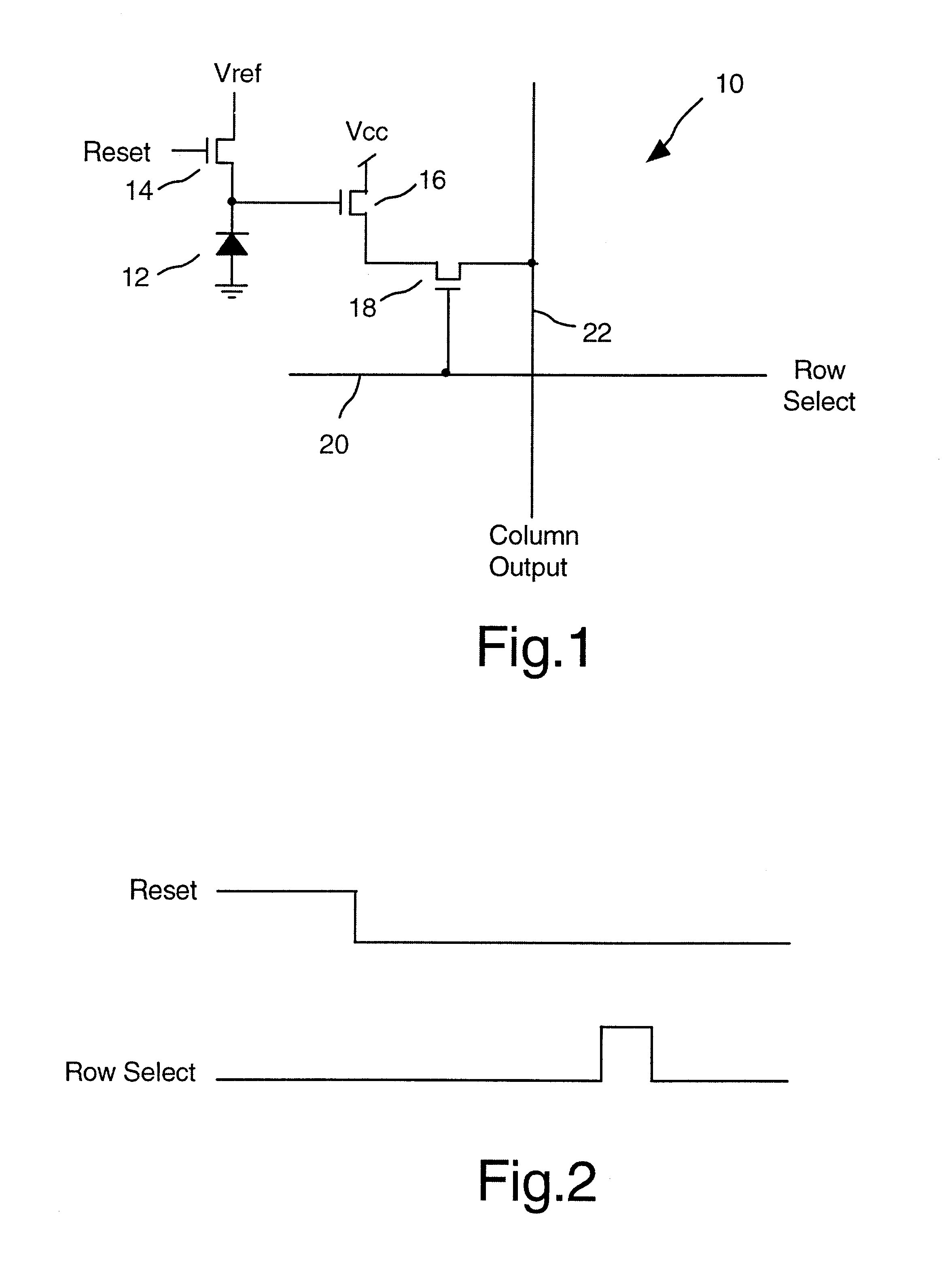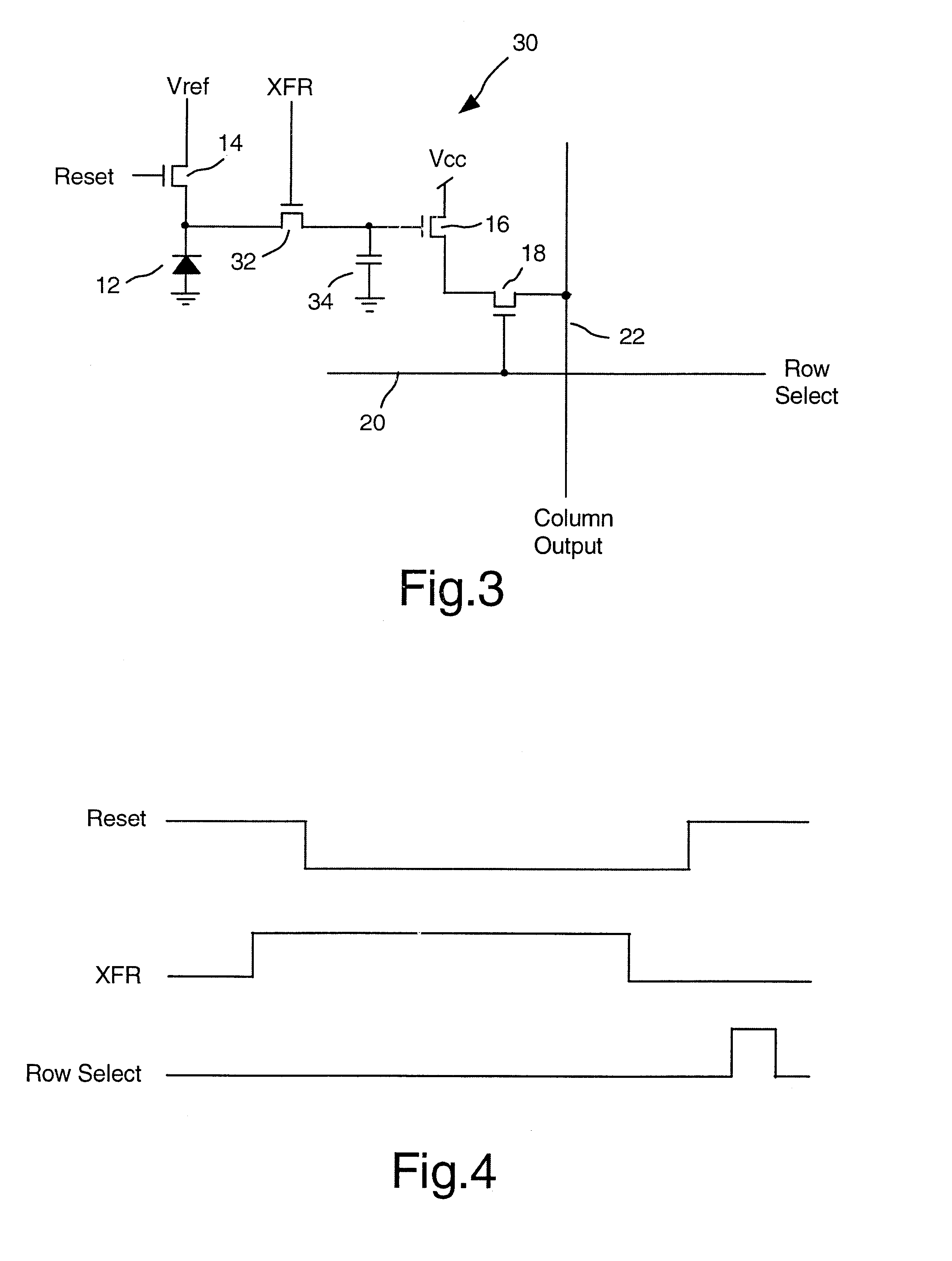Active pixel sensor with bootstrap amplification and reduced leakage during readout
a technology readout, which is applied in the field can solve the problems of sensitivity, noise, noise nature of active pixel sensor gain, and increase achieve the effect of reducing the amount of charge generated, and reducing the noise of the active pixel sensor
- Summary
- Abstract
- Description
- Claims
- Application Information
AI Technical Summary
Problems solved by technology
Method used
Image
Examples
first embodiment
Referring now to FIG. 5, an active pixel sensor 50 according to the present invention is depicted schematically coupled to a row select line and a column output line. The active pixel sensor depicted 50 in FIG. 5 is similar to the active pixel sensor of 10FIG. 1, and accordingly, the same reference numerals are employed for corresponding elements in the two drawing figures. Thus active pixel sensor 50 includes photodiode 12 coupled in series with MOS N-Channel Reset transistor 14 between the fixed ground potential and the Vref voltage such that photodiode 12 is reverse biased. Active pixel sensor 50 of FIG. 3 differs from active pixel sensor 10 of FIG. 1 in the important aspect that the drain of the MOS N-Channel Source-Follower transistor 18 is connected to a switchable supply voltage Vd instead of a fixed drain supply voltage (Vcc in FIG. 1). Further, the voltage Vref may be a lower voltage than that encountered in the prior art.
second embodiment
Referring now to FIG. 6, an active pixel sensor 60 according to the present invention is depicted schematically coupled to a row select line and a column output line. The embodiment of FIG. 6 is very similar to the embodiment of FIG. 5, except that MOS N-Channel Transfer transistor 32 is coupled between the cathode of photodiode 12 and the gate of MOS N-Channel Source-Follower transistor 16. The gate of MOS N-Channel Transfer transistor 32 is coupled to a XFR signal line.
The pixel sensors 50 and 60 of the present invention provides an improved performance in the environment of an array in which pixel sensors 50 or 60 is usually encountered. This aspect of the present invention may be most easily seen with reference to FIG. 7, a block diagram of a portion of an array including plurality of rows of active-pixel sensors of FIG. 5, and FIG. 6, a timing diagram illustrating the operation of an array of pixel sensors 50.
Array portion in FIG. 7 is shown as a 2.times.2 portion for illustrat...
PUM
 Login to View More
Login to View More Abstract
Description
Claims
Application Information
 Login to View More
Login to View More - R&D
- Intellectual Property
- Life Sciences
- Materials
- Tech Scout
- Unparalleled Data Quality
- Higher Quality Content
- 60% Fewer Hallucinations
Browse by: Latest US Patents, China's latest patents, Technical Efficacy Thesaurus, Application Domain, Technology Topic, Popular Technical Reports.
© 2025 PatSnap. All rights reserved.Legal|Privacy policy|Modern Slavery Act Transparency Statement|Sitemap|About US| Contact US: help@patsnap.com



